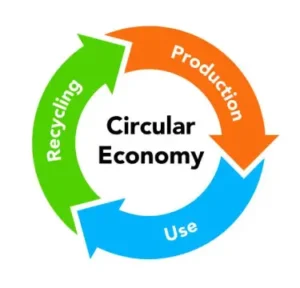Introduction
In a world where technological advancements rapidly transform consumer landscapes, planned obsolescence has appeared as a controversial business strategy. This practice, where products are deliberately designed to have a short lifespan, not only compromises consumer rights but also significantly harms the environment. As awareness of these issues grows, consumers and policymakers alike are calling for a shift towards more sustainable and ethical manufacturing practices.
The Culture of Planned Obsolescence
Defining Planned Obsolescence
Planned obsolescence refers to the strategic design of products to become outdated, malfunction, or cease functioning after a predetermined period. This ensures that consumers feel the need to buy new products sooner than technically necessary. Common tactics include using non-durable materials, designing products to be non-upgradeable, and often releasing new models with minor enhancements that make earlier versions seem less capable or out-of-date.
Consumer Manipulation and Economic Impact
The economic model driven by planned obsolescence manipulates consumer behaviour by creating a constant demand for the latest products. This practice capitalizes on the allure of ‘newness’ and technological trends, pushing consumers to buy new instead of keeping existing products. Economically, this creates a cycle of spending that benefits manufacturers while disadvantaging consumers, especially those who cannot afford frequent upgrades.
The Rip-Off of Consumer Rights
Erosion of Fair-Trade Principles
Planned obsolescence challenges the fairness in consumer markets by significantly disadvantaging the buyer. Products with artificially shortened lifespans prevent consumers from getting full value for their purchases, violating basic fair-trade principles. This not only leads to financial waste but also fosters a consumer culture steeped in excessive materialism and waste.
Legal and Ethical Implications
The intentional shortening of product lifespans raises numerous ethical questions about the integrity of business practices. From a legal perspective, this may involve deceptive marketing and unfair business practices, which some regions are beginning to legislate against. Consumer protection laws are thus crucial in ensuring that rights are safeguarded, and companies are held accountable for the longevity and quality of their products.
Environmental Impact and Sustainability Concerns
Worsening Electronic Waste Crisis
Electronic waste is one of the fastest-growing waste streams globally, worsened by the high turnover rate of electronics driven by planned obsolescence. These products often contain hazardous materials that, when improperly disposed of, pose significant environmental and health risks. The cycle of frequent replacement thus not only leads to greater resource use but also contributes to serious pollution issues.
Resource Depletion and Environmental Degradation
The continuous cycle of producing new goods to replace obsolete ones demands enormous quantities of raw materials and energy. This practice is unsustainable as it depletes natural resources, increases carbon emissions, and leads to significant ecological disturbances, including habitat destruction and biodiversity loss.
The Call for Change
Strengthening Consumer Protection Laws
To counter the effects of planned obsolescence, there is a pressing need for stronger consumer protection laws that mandate greater product transparency, including clear information on expected product lifespans and repairability. Such regulations would not only enhance consumer rights but also encourage manufacturers to create more durable and sustainable products.
Encouraging Innovation and Sustainability
By incentivizing sustainable design and innovation, businesses can be part of the solution. This includes developing products that are easy to repair, upgrade, and recycle. Incentives for companies that prioritize these practices could transform market dynamics and help reduce the ecological footprint of manufactured goods.
Promoting Consumer Education
Educating consumers about planned obsolescence and its impacts empowers them to make more informed choices. Awareness programs that highlight the benefits of sustainability, the importance of choosing durable products, and the rights of consumers can shift public belief and demand towards products that offer better value and longevity.
Supporting the Circular Economy

A shift towards a circular economy where products are designed for longevity, reuse, repair, and recycling is fundamental to overcoming the challenges of planned obsolescence. Such an economy would encourage the use of sustainable materials and the design of products with their entire lifecycle in mind, reducing waste and environmental impact.
Conclusion and Call to Action
Planned obsolescence not only undermines consumer rights but also poses significant threats to our environmental health. By advocating for stronger regulations, supporting sustainable business practices, and making informed purchasing decisions, we can mitigate these impacts. It’s time to demand products designed for durability and sustainability to ensure a healthier, fairer, and more sustainable future.
Question for Reader
How will you contribute to combating planned obsolescence and promoting a sustainable future?
Share This Article
Join the fight against unnecessary waste and consumer exploitation by sharing this comprehensive insight into planned obsolescence. Spread the word and encourage sustainable consumption habits.
References:
Examples of Planned Obsolescence: https://durabilitymatters.com/planned-obsolescence/
The truth behind planned obsolescence in product design: https://www.unsw.edu.au/news/2020/06/the-truth-behind-planned-obsolescence-in-product-design
Challenging Planned Obsolescence: https://www.activesustainability.com/sustainable-development/battle-against-planned-obsolescence/
What is Planned Obsolescence and Why do Manufacturers Practice it: https://www.assetpanda.com/resource-center/blog/planned-obsolescence-modern-product-life-cycle/

